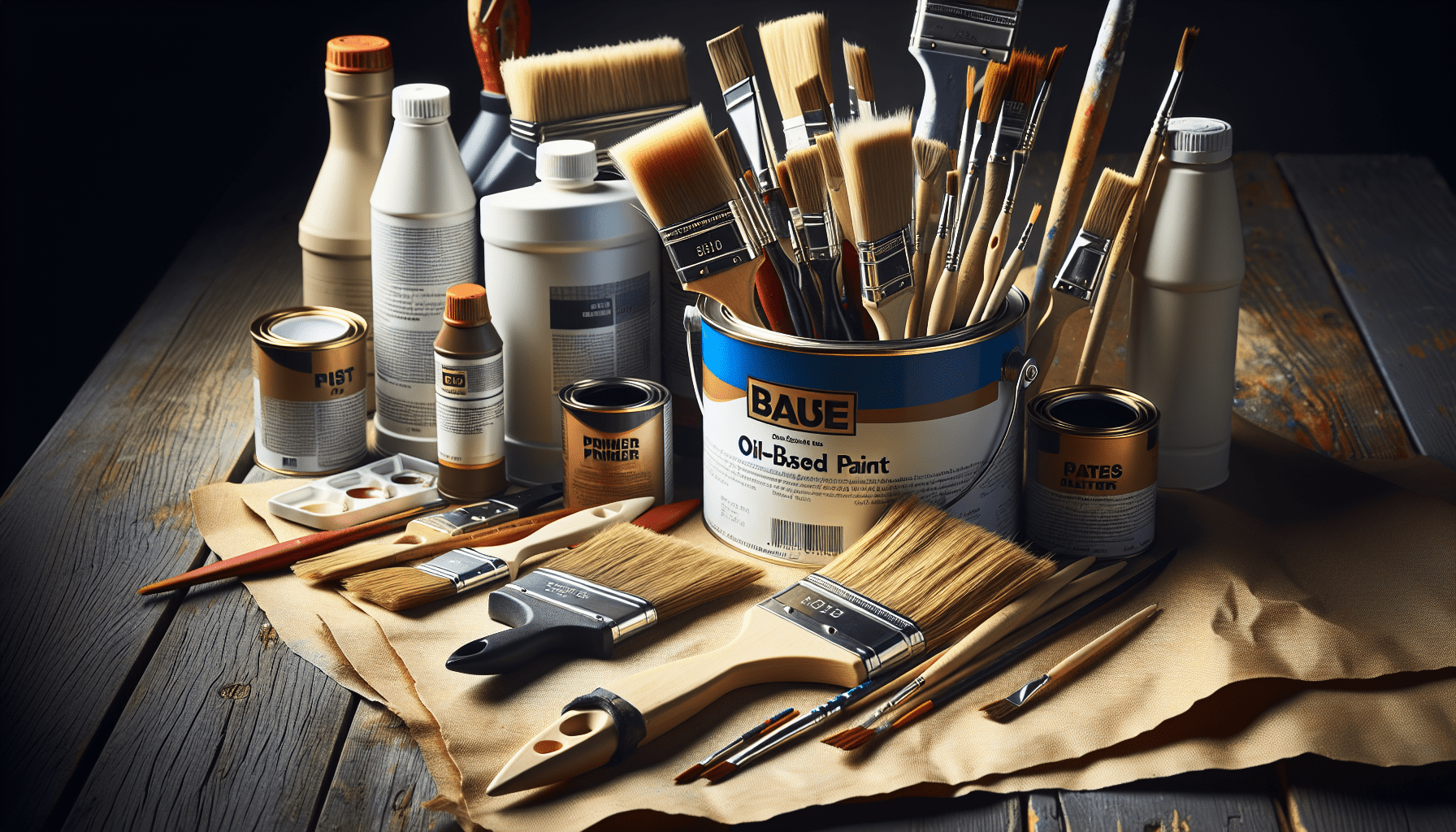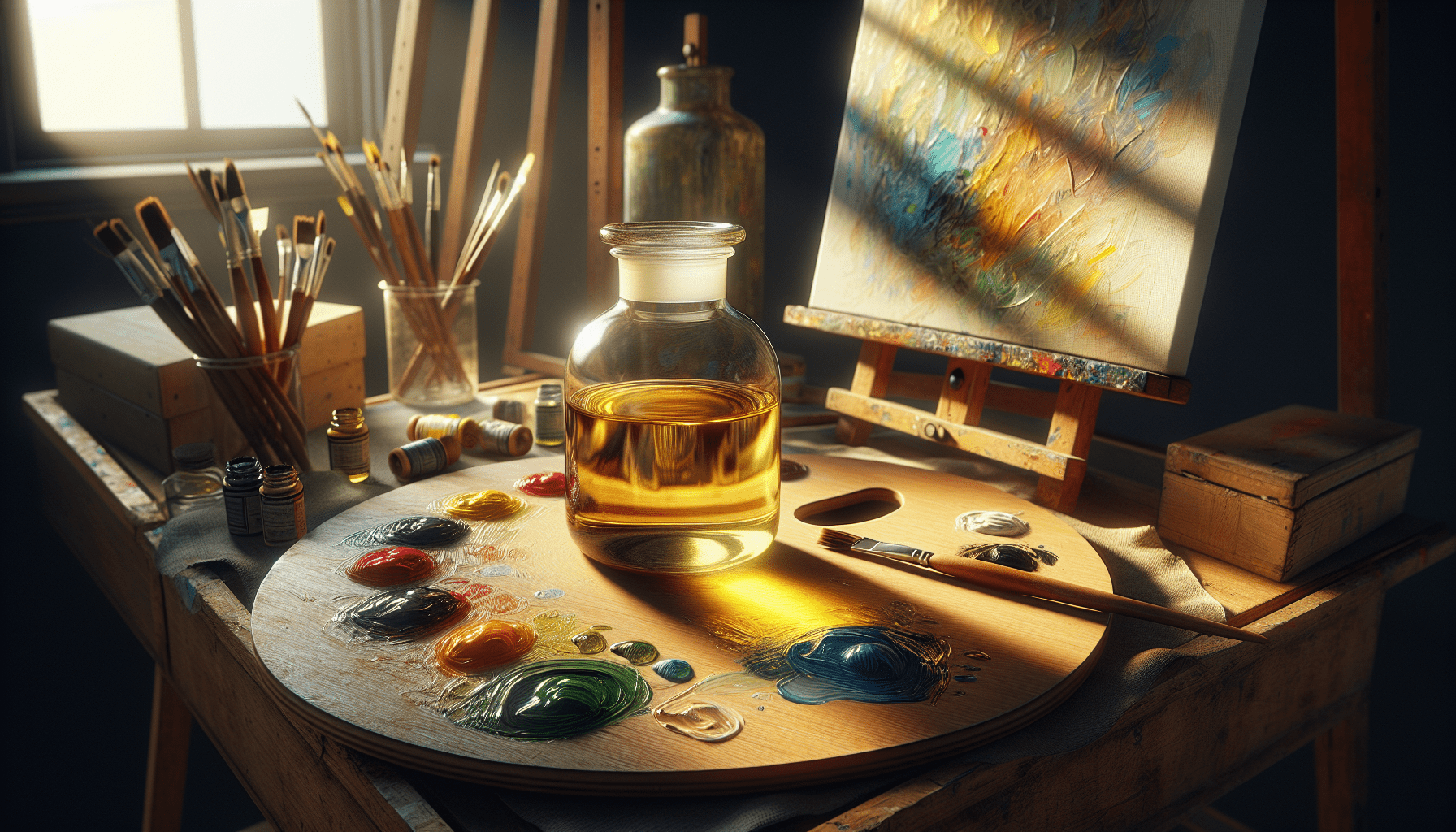Should I Varnish My Oil Painting” delves into the essential considerations and benefits of applying a varnish to your oil paintings. It explores the protective attributes varnish provides against environmental factors such as dust, UV rays, and atmospheric pollutants, while also detailing how varnish can enhance the vibrancy of colors and overall aesthetic appeal. Furthermore, the article outlines the differences between various types of varnishes and the appropriate techniques for application, ensuring that you can make an informed decision to preserve and prolong the beauty of your artwork. Have you ever wondered whether applying varnish to your oil painting is truly necessary? If this question has crossed your mind, you’re certainly not alone. Many artists, both novice and experienced, grapple with the decision of whether or not to varnish their artwork. It’s an important consideration with significant implications for the longevity, appearance, and protection of your painting.

Understanding Varnish: What Is It and What Does It Do?
Before diving into the pros and cons of varnishing, it’s essential to understand what varnish is and the role it plays in oil painting.
What Is Varnish?
Varnish is a transparent, protective layer applied over the surface of a painting. It is typically composed of resins dissolved in a solvent. The primary purpose of varnish is to form a protective barrier over the paint film.
The Purpose of Varnish
The protective nature of varnish serves several critical functions:
- Protection: Varnish acts as a shield against dust, dirt, and other environmental factors that could harm the painting.
- Enhancement: It enhances the vibrancy and depth of colors, giving your painting a polished, finished look.
- Uniformity: Varnish can even out surface sheen, addressing areas of gloss and matte inconsistency.
- Reversibility: A varnish layer can be safely removed and replaced by a conservator without damaging the underlying paint.
Types of Varnishes for Oil Paintings
Choosing the right type of varnish is critical. There are several varnishes suitable for oil paintings, each with unique properties and benefits.
Dammar Varnish
Characteristics
- Derived from natural tree resin
- Quick-drying and easy to use
- Provides a warm, glossy finish
Pros and Cons
| Pros | Cons |
|---|---|
| Enhances color brilliance | Prone to yellowing over time |
| Relatively inexpensive | Can become brittle |
| Widely available | Less durable in humid climates |
Synthetic Resin Varnishes
Characteristics
- Made from synthetic polymers
- Includes varnishes such as Gamvar and Soluvar
- Offers greater clarity and resistance to yellowing
Pros and Cons
| Pros | Cons |
|---|---|
| Resistant to yellowing | Often more expensive |
| Easy to remove | Requires more careful application |
| Durable and flexible | May need specialized solvents for removal |
Retouch Varnish
Retouch varnish serves as a temporary protective layer and is often applied during the drying process of an oil painting. It is less permanent than final varnishes and can be used to even out the sheen and provide a slight barrier while the paint continues to cure.
Should You Varnish Your Oil Painting?
Advantages of Varnishing
Let’s explore the benefits of applying varnish to your oil painting in more detail.
Enhanced Color Saturation
Varnish can significantly enrich and deepen the colors of your painting, giving the artwork a more vivid and cohesive visual impact.
Protection from Environmental Damage
Varnish protects your painting from dust, pollutants, UV rays, and physical abrasions. This layer ensures your masterpiece remains in excellent condition for years to come.
Improved Longevity
Oils in the paint layer can oxidize and deteriorate over time. A varnish layer can slow this process, extending the life of your painting.
Disadvantages of Varnishing
While varnishing offers many benefits, there are also some drawbacks to consider.
Potential for Yellowing
Some varnishes, particularly those made from natural resins, can yellow over time. This yellowing can alter the appearance of your painting, which might not be desirable.
Need for Proper Application
Incorrect application of varnish can result in streaks, bubbles, or an uneven finish. It requires meticulous attention to detail and sometimes practice to perfect the technique.
Reversibility and Maintenance
Over time, the varnish layer can become dirty or damaged and might need to be removed and replaced. This process should ideally be carried out by a professional conservator to avoid damaging the artwork underneath.
How to Varnish Your Oil Painting
Prepping Your Painting
- Wait Until Dry: Ensure your painting is completely dry. This can take anywhere from six months to a year, depending on the thickness of the paint layers.
- Clean the Surface: Gently dust the surface of your painting with a soft brush or cloth to remove any particles.
Choosing the Right Environment
- Ventilation: Work in a well-ventilated area to avoid inhaling fumes from the varnish.
- Temperature and Humidity: Maintain optimal working conditions – moderate temperatures and low humidity are ideal.
Application Techniques
Materials Needed
- Varnish (appropriate for your painting)
- A flat, wide varnish brush
- A clean, dust-free workspace
- Personal protective equipment (gloves and mask)
Steps to Apply Varnish
- Test First: Always test varnish on a small, inconspicuous section of your painting or a similar surface.
- Even Application: Apply the varnish in thin, even layers using long, parallel strokes.
- Drying Time: Allow each layer to dry completely before applying the next. This can take several hours to a few days, depending on the varnish used.

Varnish Maintenance and Removal
When to Reapply Varnish
Over time, varnish can wear down and might need to be reapplied. Signs that it’s time for a new layer include dulling of colors, visible scratches, or an uneven sheen.
Removing Old Varnish
Varnish removal should only be undertaken by those experienced in art conservation or under the guidance of a professional. Missteps can cause irreparable damage to the painting.
Materials Needed
- Appropriate solvent (specific to the varnish type)
- Soft, lint-free cloths
- Personal protective equipment
Steps to Remove Varnish
- Test Solvent: Test a small area to ensure the solvent works without harming the underlying paint.
- Apply Solvent: Gently rub the solvent with a cloth to remove the varnish layer in small sections.
- Reapply Varnish: Once the old varnish is removed, allow the painting to return to its stable condition before applying a new layer of varnish.
Common Myths and FAQs About Varnishing Oil Paintings
Myth: Varnishing is Not Necessary
Fact: While varnishing is a personal choice, it undeniably offers benefits like protection and color enhancement, which can be crucial depending on the painting’s environment and longevity objectives.
Myth: All Varnishes Will Yellow
Fact: Many modern synthetic varnishes are designed to resist yellowing, although it’s essential to choose the right product and apply it correctly to minimize the risk.
FAQ: Can I Varnish an Oil Painting Myself?
Yes, with the right materials, a clean working environment, and careful application, you can varnish your oil painting yourself. However, if unsure, consulting a professional conservator is wise.
FAQ: How Long Should I Wait to Varnish My Painting?
You should wait until your oil painting is thoroughly dry, which typically takes six months to a year. Applying varnish over wet paint can cause a myriad of issues, including cracking and dulling.
Conclusion
The decision to varnish your oil painting is multifaceted, involving considerations of protection, visual enhancement, and preservation. Varnish can shield your artwork from environmental damage, enrich color vibrancy, and ensure a uniform finish. However, it also requires careful selection and application to avoid issues such as yellowing and inconsistent appearance.
By understanding the types of varnishes available and their specific benefits and drawbacks, you can make an informed decision. Should you choose to varnish, following best practices for application and maintenance will help ensure your oil paintings remain radiant and protected for years to come.



